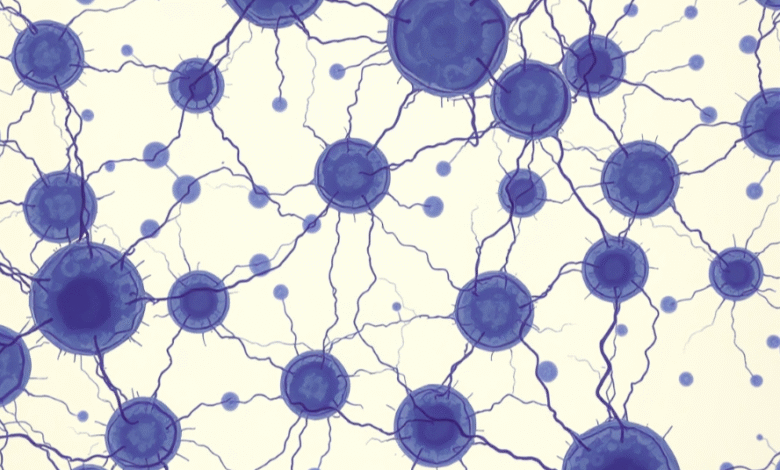HeLa Cells: The Immortal Legacy in Biomedical Research

Introduction
In 1951, scientists found cells from Henrietta Lacks that could grow forever in a lab. These HeLa cells have become super important for medical research. They’ve helped scientists make big discoveries and create new treatments. HeLa cells are special because they keep dividing without dying, unlike normal human cells. This makes them great for studying diseases, testing medicines, and learning how our bodies work. Let’s explore why HeLa cells are still so important today and the interesting story behind them.
Key Takeaways
- HeLa cells, discovered in 1951, are the first immortal human cell line
- These cells have been crucial in numerous scientific breakthroughs, including the polio vaccine
- HeLa cells’ unique ability to divide indefinitely makes them invaluable for long-term research
- They are widely used in virology, cancer research, drug screening, and genetic studies
- The story of HeLa cells has raised important ethical questions about patient consent and tissue ownership
The Origin and Legacy of HeLa Cells
Historical Background
Henrietta Lacks was a young African American woman who went to the hospital for cancer treatment. Doctors took some of her cancer cells without asking her. This wasn’t unusual back then, but it makes us think about patient rights today. When scientists tried to grow Henrietta’s cells in the lab, they were amazed to see the cells kept multiplying long after normal cells would have died. This was the start of the first “immortal” human cell line, which they named HeLa after Henrietta Lacks.
Milestones in Research
Since their discovery, HeLa cells have helped scientists make many important breakthroughs. Here are some examples:
- They were used to develop the polio vaccine, which has saved many lives
- HeLa cells have been essential in cancer research, helping scientists understand how tumors grow and how to fight them
- They’ve been used to study how radiation, toxic substances, and infections affect human cells
- These cells have even been sent to space to see how zero gravity affects human biology
- HeLa cells have helped with in vitro fertilization techniques
- They’ve played a big role in mapping genes and understanding genetic diseases
Unique Characteristics of HeLa Cells
Immortality and Rapid Division
What makes HeLa cells so special is their ability to keep dividing forever. Normal human cells can only divide about 40 to 60 times before they stop. But HeLa cells just keep going, doubling their number every 20 to 24 hours. This means scientists can grow lots of cells quickly, which is really useful for experiments.
Genetic Stability and Adaptability
Even though HeLa cells come from a cancer tumor, they’re surprisingly stable. This means experiments using HeLa cells can be repeated reliably, which is very important in science. They’re also good at growing in different conditions, making them easy to work with in labs all over the world.
Applications in Biomedical Research
Virology and Vaccine Development
HeLa cells have been really useful for studying viruses and making vaccines. Scientists use them to understand how viruses infect cells and reproduce. This has helped create vaccines for diseases like polio and HPV, and even in researching treatments for COVID-19.
Oncology and Cancer Biology
Since HeLa cells come from a cancer tumor, they’re very valuable for cancer research. Scientists use them to study how cancer cells grow and spread, and to test new treatments. This helps researchers learn a lot about cancer without putting real patients at risk.
Toxicology and Drug Screening
HeLa cells are often used to test new medicines. Scientists can see how HeLa cells react to different chemicals or drugs, which helps them understand if a treatment might be safe or effective for humans. This makes it easier to develop new medicines more quickly and safely.
Considerations and Ethical Dimensions
Genomic Instability
While HeLa cells are incredibly useful, they’re not perfect. Because they come from a cancer tumor, their genes are a bit different from normal human cells. They have more chromosomes than usual, and these can change over time. This means scientists have to be careful about how they use HeLa cells in some types of studies.
Read more: Exploring Tech Innovations in the Automotive Industry
Ethical Reflection
The story of HeLa cells has raised important questions about ethics in medical research. Henrietta Lacks never knew her cells were taken, and her family wasn’t told about the cells’ importance for many years. This has led to discussions about patient rights, informed consent, and who should benefit from medical discoveries. Today, there are much stricter rules about how scientists can use human cells in research. Patients have to give permission before their cells or tissues can be used in experiments.
Conclusion
HeLa cells have been incredibly important for medical science over the past 70 years. They’ve helped create life-saving vaccines, improved our understanding of cancer, and continue to be a vital tool in labs around the world. The story of HeLa cells also reminds us how important it is to be ethical in medical research and to communicate clearly with the public about scientific work. As we look to the future, HeLa cells will likely continue to help scientists make new discoveries and develop treatments that can help people everywhere.
